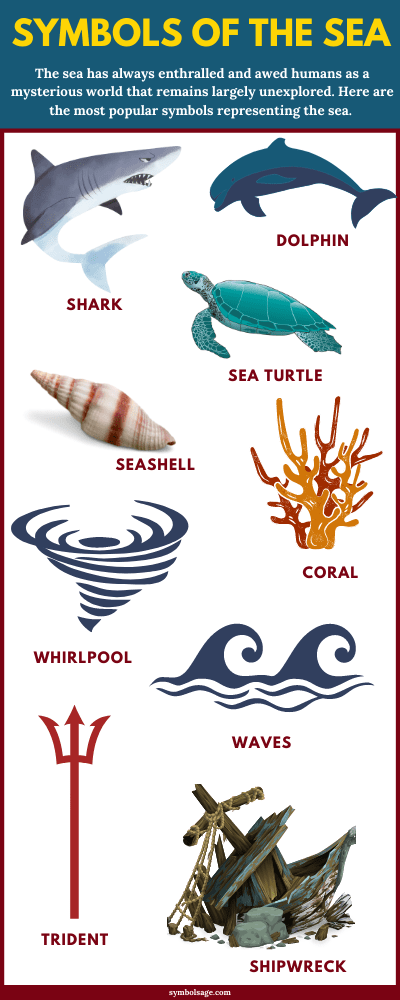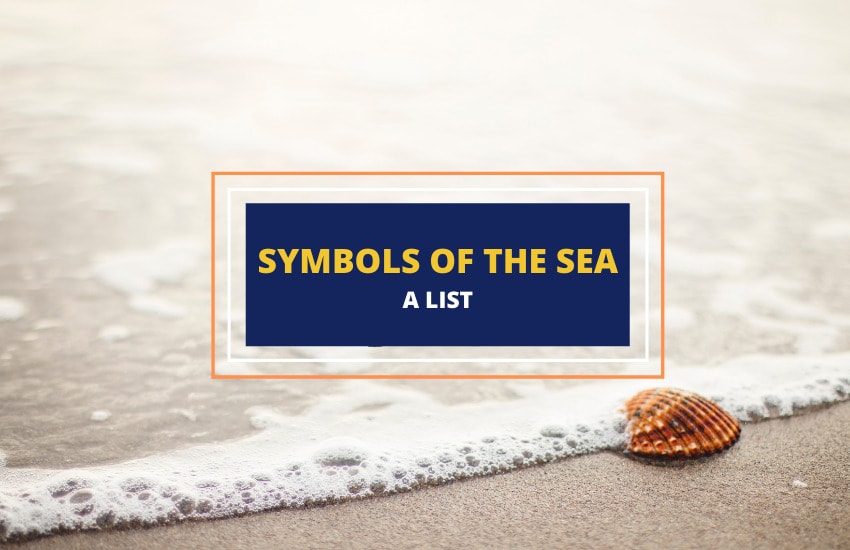
Table of Contents
The sea has always enthralled and awed humans as a mysterious world that remains largely unexplored.
From the seashells to shipwrecks, there are many symbols that represent the sea, demonstrating its mystery, power, and unpredictability.
1. Dolphin

The most recognized symbol of the sea, the dolphin found its place in the folklore of the Greeks and Romans.
In Iliad, Homer mentions the dolphin as a devouring sea beast as a simile for Achilles. In Electra by Sophocles, they’re referred to as “oboe-lovers,” as they escort ships on which music is playing.
As Plato notes in the Republic, these creatures are believed to save a person from drowning in the sea, associating them with protection.
The dolphin’s trusting, loyal nature, and its graceful movements, antics, and intelligence are all the stuff of legend. They remain one of the most beloved sea creatures and a symbol of the freedom and expansiveness of the sea.
2. Shark

A strong predator of the sea, the shark is seen as a symbol of power, superiority, and self-defense. It evokes both fear and awe and is often the antithesis of the dolphin in terms of how it’s viewed by society.
In 492 BCE, Greek writer Herodotus referred to them as “sea monsters” that attacked shipwrecked Persian sailors in the Mediterranean.
Greek poet Leonidas of Tarentum described the shark as “a great monster of the deep”. No wonder, ancient sailors regarded them as harbingers of death.
In ancient Maya culture, shark teeth were used to represent the sea in ceremonies. They were found in buried offerings at sacred Maya sites. There was also a depiction of a shark-like sea monster dating to the Early Classic Maya period, around 250 to 350 CE.
In Fiji, the shark-god Dakuwaqa is believed to provide protection for people from all kinds of danger at the sea. The people of Kadavu don’t fear sharks, but revere them, pouring a local drink called kava into the sea to honor the shark god.
3. Sea Turtle
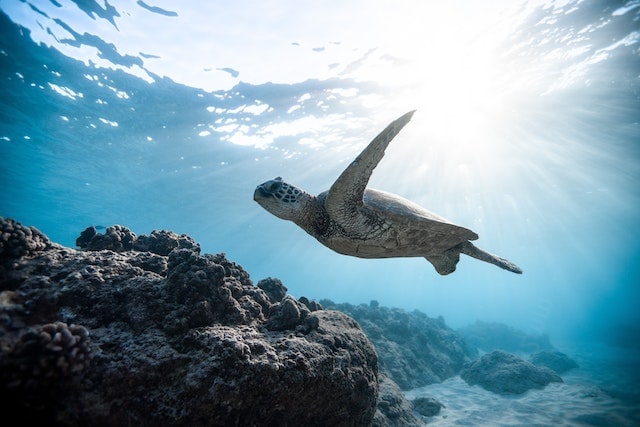
While the terms “tortoise” and “turtle” are used interchangeably, they aren’t the same. All tortoises are considered turtles, but not all turtles are tortoises.
Tortoises are land creatures, but sea turtles live entirely in the ocean, making them a symbol of the sea.
The tortoise has elephantine hind limbs and feet, but the sea turtle has long, paddle-like flippers adapted for swimming.
Sea turtles are also deep divers and sleep underwater. It’s said that the males never leave the waters, and the females only come on land to lay eggs.
4. Seashells
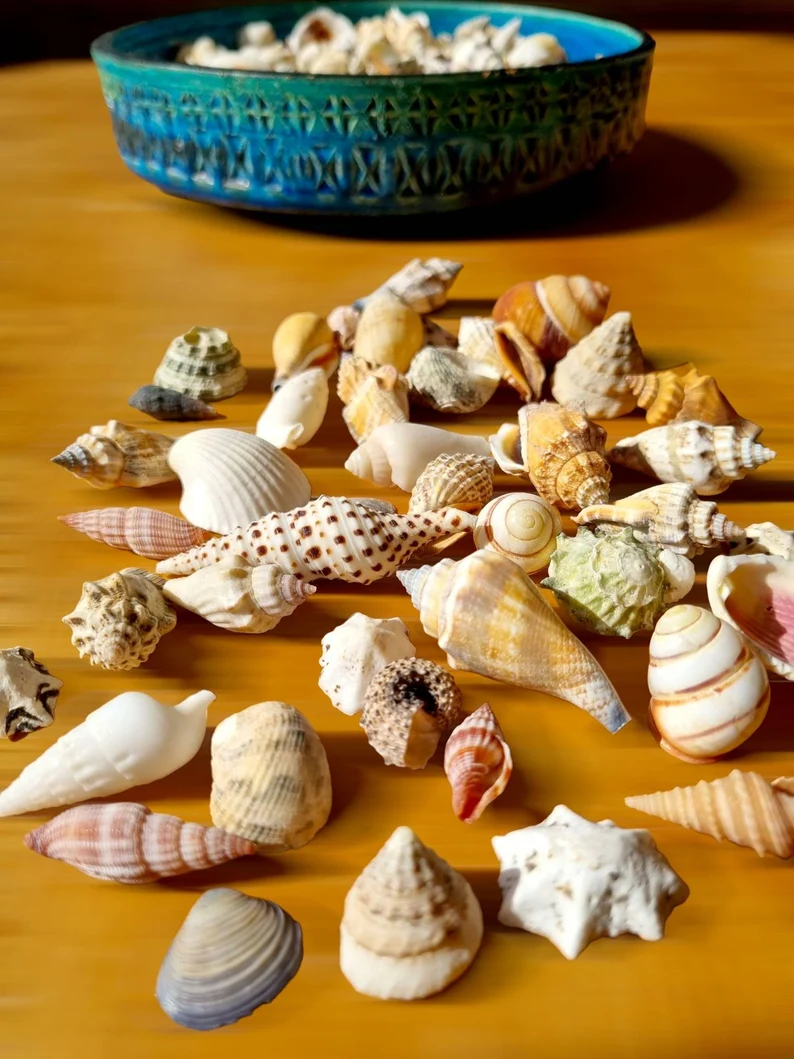
Seashells are associated with the sea as a symbol of fertility. In Greek mythology, they’re closely linked with Aphrodite, the goddess of love and beauty. She was born out of sea foam and rode on a seashell to the island of Cythera.
In Sandro Botticelli’s The Birth of Venus, Roman goddess Venus is depicted standing on a scallop shell.
Seashells are collected all over the world because of their beauty and elegance—but one of the rarest is the cone shell known as the “glory of the sea.”
5. Coral

Lush coral gardens can be found not only in shallow water but also in the deep sea. Serving as a home to marine creatures, corals are symbols of the sea.
Later, they became associated with protection, peace, and transformation.
The ancient Greeks, Romans, and Native Americans fashioned them into jewelry, and wore them as amulets against evil.
From the Georgian through the early Victorian Era, they were very popular jewelry stones in cameos and rings.
6. Waves
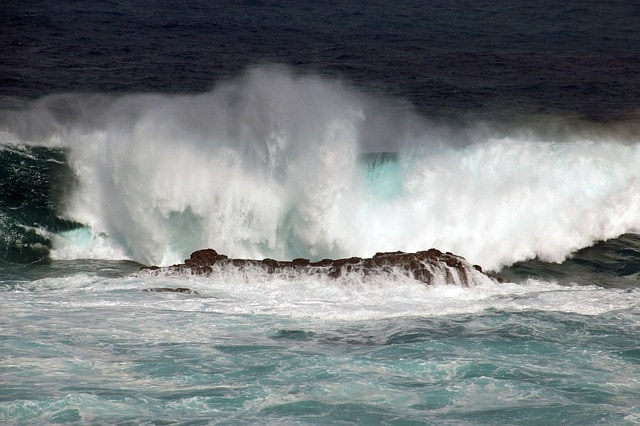
Throughout history, waves have been a symbol of the strength and power of the sea. They’re unpredictable, and some can be devastating.
The term tsunami is derived from the Japanese words tsu and nami, meaning harbor and wave respectively.
In art, Katsushika Hokusai’s series Thirty-Six Views of Mount Fuji, The Great Wave off Kanagawa gracefully portrays the power of the sea,
though it has gained many contradictory interpretations that weren’t intended by its creator. The woodblock print actually depicts a rogue wave—not a tsunami.
7. Whirlpool
Symbolic of the power of the sea, the whirlpool represented danger for Greek sailors when they first ventured into the Mediterranean waters.
It has been interpreted as the depths of the darkness, the great ordeal, and the unknown.
Whirlpools play a role in several Greek myths. The explanation for whirlpools is that Charybdis the sea monster swallows huge amounts of water, creating giant whirlpools that destroy everything in its path.
Pliny the Elder even described the whirlpool of Charybdis as notoriously treacherous. In Homer’s Odyssey, it wrecked the ship of Odysseus on his way home from the Trojan War.
In Apollonius Rhodius’ Argonautica, it also became an obstacle in the voyage of the Argonauts, but the sea goddess Thetis escorted their ship.
8. Shipwrecks
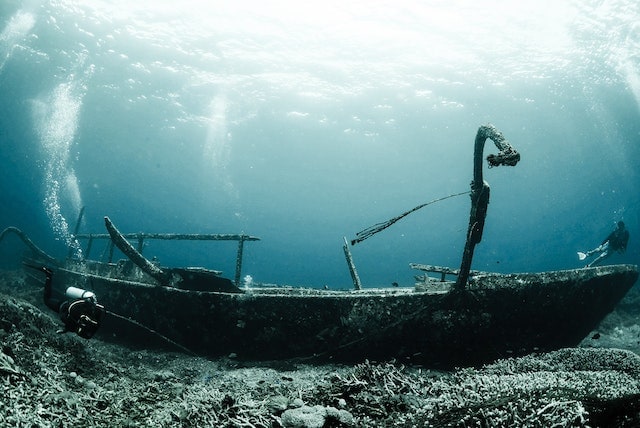
While there are many interpretations for shipwrecks, they’re a testament to the power of the sea and the fragility of life.
Everyone knows about the Titanic, but there are millions of undiscovered shipwrecks around the world, with the oldest sunken ships dating back around 10,000 years.
No wonder they’ve been a source of inspiration to authors, artists, and scholars since ancient times.
One of the earliest stories of sunken ships is The Tale of the Ship-Wrecked Sailor, which can be dated to the Middle Kingdom of Egypt, around 1938 to 1630 BCE.
In The Odyssey, Odysseus is freed from Calypso’s island with the help of Zeus, but Poseidon, the Greek god of the sea, sends a great wave crashing over his boat, which leads to a shipwreck.
9. Trident

Even though the trident has been found in different cultures, it remains a popular symbol of the Greek sea god Poseidon, and by extension, has become a symbol of the sea and sovereignty over the seas.
According to the Greek poet Hesiod, the weapon was fashioned by the three Cyclopes who also fashioned Zeus’ thunderbolt and Hades’ helmet.
The Romans identified Poseidon with Neptune as their sea god who was also represented by the trident.
10. The Abyss
There’s no place on Earth as distant as the deep ocean, making the abyss a symbol of the sea.
While it’s commonly used to represent indefinite depths or uncertainty, there’s a real-life abyss in the pelagic zone between 3,000 and 6,000 meters down in the seabed.
It’s a cold, dark place, serving as a home to many sea creatures, many of which have not been discovered yet.
11. Deep-Sea Trenches
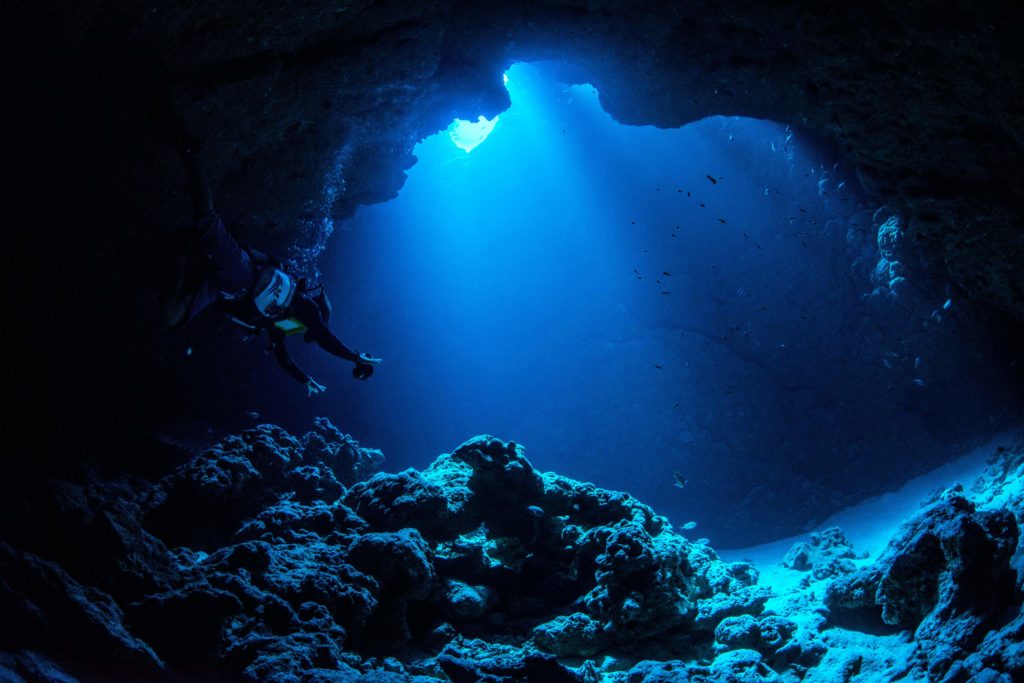
According to National Geographic, “Ocean trenches are long, narrow depressions on the seafloor. These chasms are the deepest parts of the ocean—and some of the deepest natural spots on Earth”.
They have depths between 6,000 meters to more than 11,000 meters. In fact, this region is called the “hadal zone,” named after Hades, the Greek god of the underworld.
These chasms weren’t explored until the 20th century, and were originally called “deeps”.
However, after World War I, they were referred to as “trenches,” when trench warfare used the term for a narrow, deep canyon.
The Mariana Trench, including the Challenger Deep, is the deepest spot on Earth, and is almost 7 miles deep.
12. Marine Snow
Resembling snowflakes in seawater, marine snow is white fluffy bits that rain down the seafloor from above. Despite its fancy-sounding name, it’s actually food composed of organic substances washed into the sea from land. They may not be as pretty as snowflakes, but they’re a staple of the deep, and the ocean gets a dose of them year-round.
Wrapping Up
The sea is represented by many symbols – several of which are sea creatures and objects found in the sea, such as dolphins, sharks, and sea turtles. Some ocean mysteries and phenomena like whirlpools and waves are also seen as representations of the strength and power of the sea and have inspired countless works of art and literature.
Similar Articles:
The Hippocampus – Greek Sea Creature
Yemaya (Yemoja) – Yoruba Queen of the Sea
Poseidon – Greek God of the Sea
Salacia – Roman Goddess of the Sea
